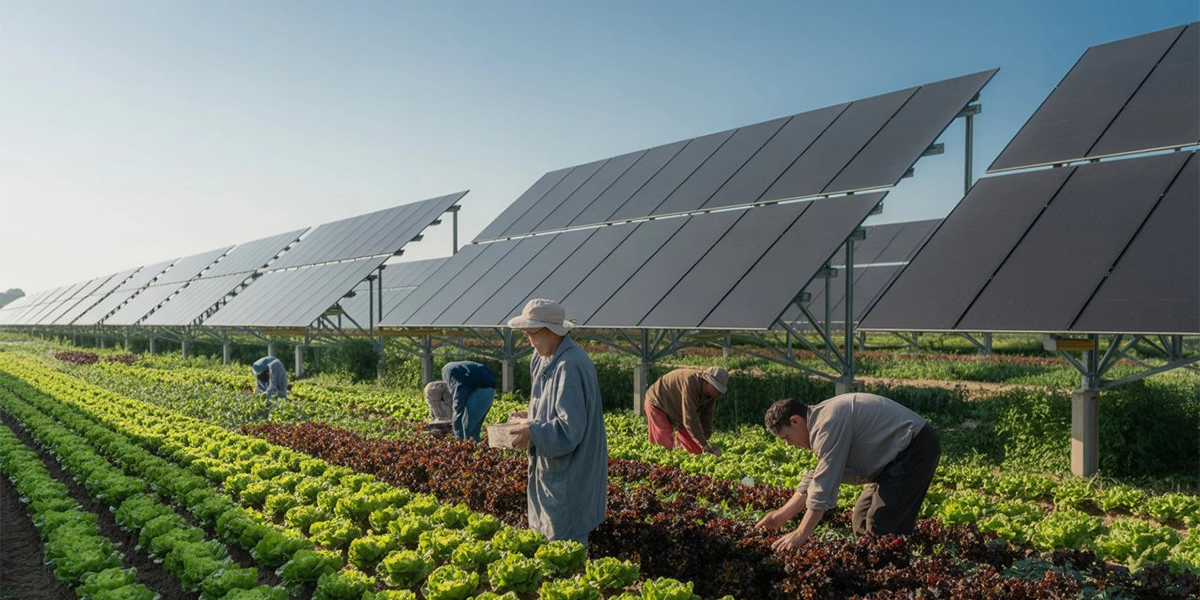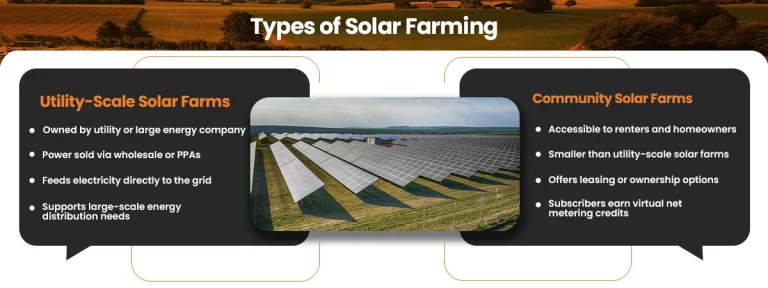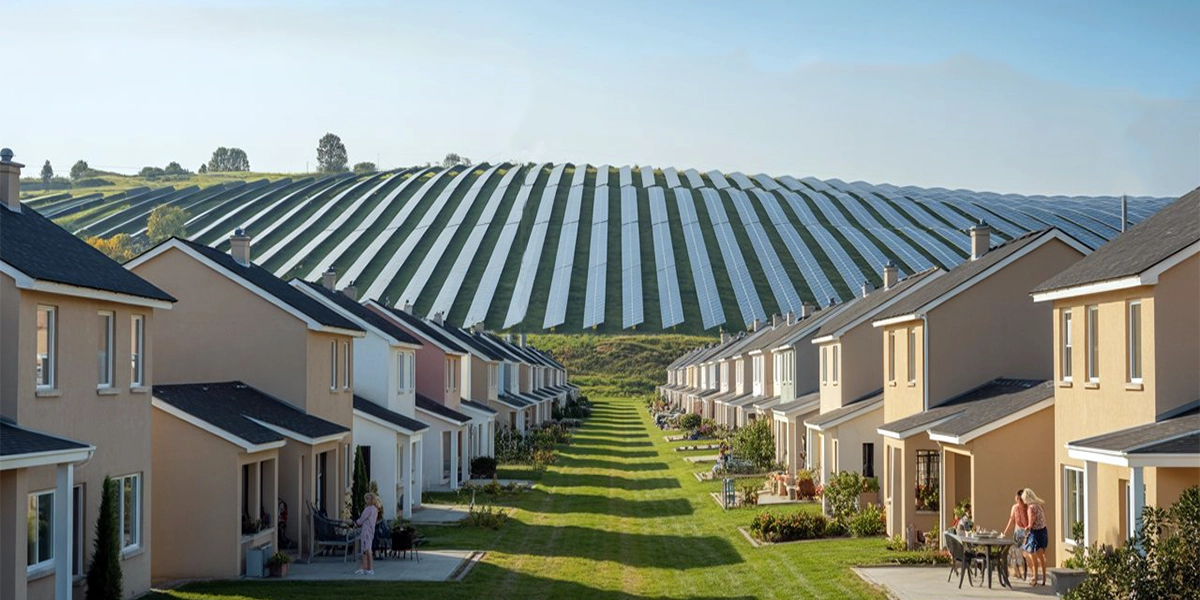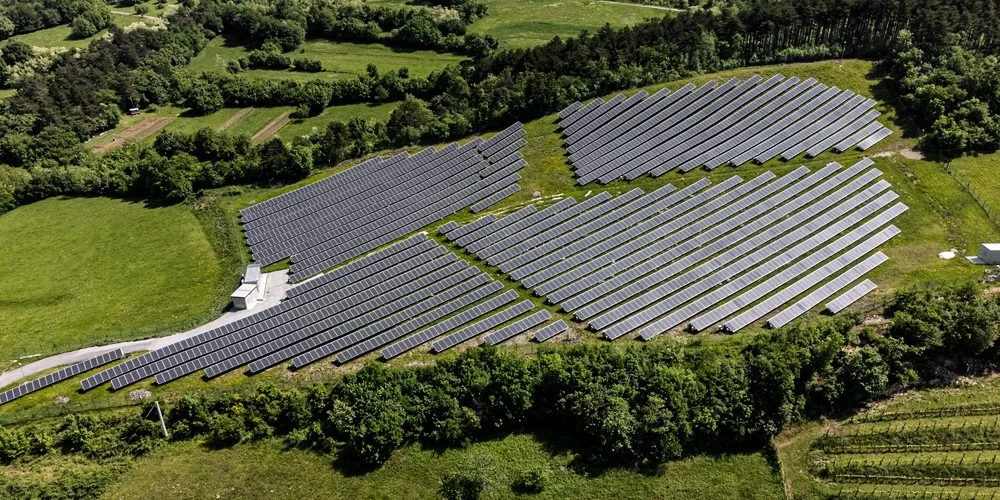- Updated On: July 10, 2025
Solar Farming: A Smart Way to Produce Food and Clean Energy Together
The solar industry has grown exponentially in the past decade, as increasing numbers of homeowners and businesses are switching to clean energy technology. Solar farming is the latest trend that is gaining popularity. A solar panel farm is a concept that merges traditional farming and solar power production on the same land. It is also known as agrivoltaics. Solar panel farming allows landowners to grow crops and generate clean power at the same time in the same place. Solar panels are strategically installed over the crops or pastures so that both can receive ample sunlight. The benefits of this model are more than just land use, the crops will be protected under the shade of the panels, soil water is better preserved, and farmers receive additional income from power generation. It’s a practical and sustainable solution to modern agriculture and the global energy crisis.

In this article, we will explore how solar farms work, their cost, and what are the benefits of agrivoltaics.
What is a solar farm?
A solar farm is a large area equipped with solar panels that harness sunlight and convert it into electricity. Also, these solar panels typically contain photovoltaic cells that absorb sunlight and generate direct current (DC) electricity. Then it converts DC into AC power for the electric grid by solar inverters. They are typically mounted on structures on the ground. Solar farms are environmentally friendly.
Solar parks, solar projects, solar installations, and solar power stations are other names for solar farms. These solar arrays are not like residential solar. Moreover, solar farms operate more like traditional power plants, sending electricity directly to the power grid.
How does a solar farm work?
Solar panel farms utilize large empty lands to capture sunlight with solar panels and turn it into electricity. The energy is then sent into the power grid and sold to customers, either under a power-purchase agreement (PPA) or as part of the power company’s energy mix. The landowner is compensated by the project owner(s) and/or the electric company for the use of the land.
What are the different types of solar farming?
Utility-scale and community solar farms are the two primary types of agrivoltaics. Utility-scale solar farms sell solar generation directly to public utilities. Community solar farms, on the other hand, sell directly to end users of electricity, including renters and homeowners.

Utility-Scale Solar Farms
A utility-scale solar farm is a large solar farm that is owned by a utility company that generates electricity for the grid. It is often referred to as just a solar power plant. The power generation at these farms is either held directly by an electric utility provider or supplied to wholesale utility buyers under a power purchase agreement (PPA), depending on the location of the installation. Regardless of the actual design, a utility is the initial consumer of solar energy and subsequently distributes the electricity produced to grid-connected residential, commercial, and industrial consumers.
Community Solar Farms
Community solar farms allow households and businesses the opportunity to go solar without the need to install rooftop solar or solar panels on their property. Community solar farms, also known as “solar gardens” or “roofless solar,” are solar power projects that generate electricity on behalf of the households and businesses that invest in the project.
These solar gardens look a lot like utility-scale solar farms, although they’re usually smaller. Consumers can either lease energy from the solar system and replace their monthly utility payments with monthly community solar payments, which are usually less expensive, or they can buy a piece of a solar farm and own that portion and the generated power.
Virtual net metering is also available to community solar subscribers in the majority of states. With this incentive, members can receive credits on their power bills for the energy produced by solar panels at a solar farm.
How much does a solar farm cost?
Joining a community solar farm can be a smart choice if traditional rooftop solar isn’t suitable for you. There is usually no upfront cost to sign up for community solar. You may anticipate saving between 5 and 15% on your electricity cost after subscribing. On a dollar-per-watt basis, a solar farm is significantly less expensive to make than home solar panel installations. Utility-scale solar panel farms, on the other hand, are usually at least one megawatt (MW) in size and can power roughly 200 houses.
What are the pros and cons of solar panel farming?
One of the best ways to save money and lessen your carbon footprint without any high upfront cost is to subscribe to a solar farm. However, it is important to consider the pros and cons before making a decision:
Advantages:
- Starting your solar farm can be a wise investment if you have enough money and land. Utility and community solar farms provide an abundant and easily accessible source of solar energy.
- In recent years, with advancements in solar panel technology, panels now require almost no maintenance. They only need to get clean occasionally.
Disadvantages:
- Property owners who want to install a solar farm also need to pay upfront costs, but they can expect a high return on investment. Selling electricity from a 1 MW solar farm can earn you up to $40,000 a year with solar farming.
- A substantial land area is required for solar farms, which are normally between 5 and 7 acres, to accommodate the solar arrays as well as the related equipment. Additionally, building a solar farm may take up to five years.
- Utility-scale and community solar farms need solar batteries to receive and store the extra energy produced by solar panels, just like solar-with-storage options for homes. This can be expensive. However, customers and owners who sell energy back to the grid through net metering may gain credits, depending on the locality.
If you have a farm and you are in the early stages of considering solar farming, Solar SME is your trusted solar partner. You can get a FREE quote with our smart solar calculator and estimate your savings with your farm!
Related Articles:
As businesses seek reliable, cost-effective energy solutions, commercial solar emerges as a powerful alternative. Beyond reducing monthly utility bills, solar offers energy independence, protection from rising rates etc. Learn about top reasons and benefits!
You can participate in a community solar project regardless of whether you rent or do not have a suitable roof or if you prefer not to have equipment installed on your property. Explore everything you should know if you are planning to subscribe to a solar farm.
A community solar farm is a practical and cost-effective alternative that makes solar energy accessible to everyone, including renters and low-income homeowners. With rising utility rates and inflation, solar farms are becoming popular. Let's explore how solar farms work and what are the perks of subscribing to a community farm project. Also, we will highlight the states offering these programs.



